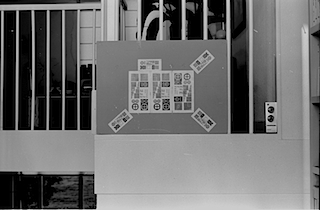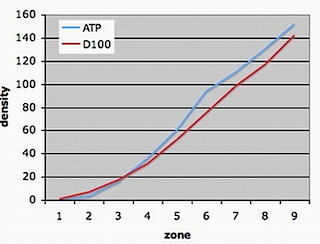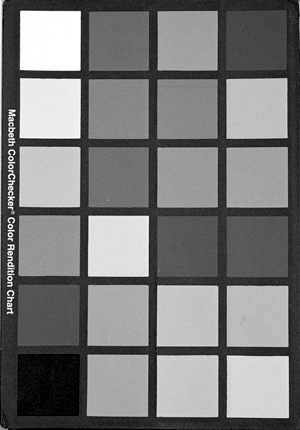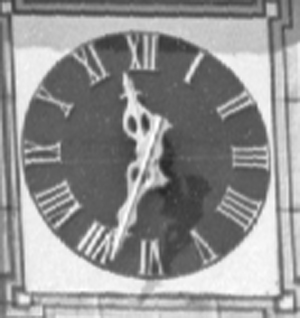New film: Rollei ATP 1.1 (november 4, 2007)
Rollei ATP 1.1. Advanced Technical Pan
Introduction
New film emulsions are not often encountered these days. An improved Kodak T-Max 400 has been promised for early 2008 and the re-launch of Fuji Velvia (classic) seems ro be imminent. The demand for films is quite low and the slump has not yet stopped. There is some optimism, especially with the dedicated small manufacturers. Here we find new developer chemicals and even new films. Most new products cater for the microfilm domain and here the silver halide technology offers visible and distinct advantages over the digital technique as employed in current solid state camera systems (this designation is scientifically more correct than the popular DSLR designation).
The newest member is the Rollei Advanced Technical Pan film made for the Maco company. Maco is rapidly becoming the main provider of high quality bw materials. Spur on the other hand has focused on providing leading edge chemical formula for a wide range of bw films. A relatively recent newcomer is Moersch, a company that specializes in chemistry for the darkroom.
These products offer excellent and sometimes superior image quality. The imagery that can be created with these materials surpasses the performance of the solid state cameras and postprocessing software. It is a pity that the claims made for the products are often overhyped, a tendency that started with the Gigabit film. This is an unpleasant trend, as the claims can be checked and when found not to be true, one may feel disappointed. The bw niche where silver halide aficionados feel happy, does not need hype but should be provided with facts.
The Rollei ATP 1.1
The film has a basic sensitivity of ISO 32, a clear polyester base and an emulsion thickness of a mere 4 micron. It is a different emulsion from the Adox CS20 and the Spur Orthopan but shares with these films the light-leaking film cartridges. One needs to transport the film for 5 frames after loading to be sure that unwanted light does not reach the emulsion.
The comparison film for this part of the report is the Ilford D100, considered by many (including me) the best all-round medium speed film on the current market.
The selection of a low speed film is often motivated by the need or wish to record very fine detail with good clarity and a subtle differentiation of luminance and tonal values.
Definition and resolution.
Resolution is the propensity to differentiate small details, and definition adds to this capability the characteristic of clarity. The human eye may be able to discern some distance between two picture elements, but when the edges are muddy or soft one has difficulty seeing the difference quite clearly. For a bw picture to have impact one wants the fine detail to be visually pleasing and to be clearly visible. The limiting resolution is not the best value to look for when definition is required.
When checking resolution (measuring is too strong a word here for a visual activity), one has to use a test chart with black and white lines or ever decreasing size and the usual limit is to look for a black/white line pair where one can detect a just distinguishable difference.
We know however that these fine differences are lost in the printing stage where the scatter of light washes away these detail differences. This is the same as when we pay too much attention to the Nyquist frequency as the defining value for the performance of solid state sensors.
I now use a more appropriate limit and I look for the black/white pair where I can see a very clear separation between the bar lines with such a distance that the enlarger will not reduce the contrast below the visibility threshold.
The camera and lens used are the Leica MP 3 and the Summicron 50mm at 5.6. I also added focus bracketing to see how much the quality degrades (a 4 micron layer is quite thin!). The remarkable fact that emerges in this domain is the relative insensitivity of the film emulsion for defocus. Where the M8 reacts very sensitive on defocus movements, the MP negatives stay sharp even when you deliberately defocus. The defocus amount is not that large so do not draw wrong conclusions! Accurate focusing is a must to get the best imagery.
The Ilford D100 film has been developed in Amaloco AM50, a sharpness preserving type of surface developer. The final resolution is above 70 linepairs/mm, but it would be wise to use the rule for best definition and settle for 55 lp/mm as the most usable value. This value is very close to the M8 delivers and we may conclude that he M8 and the D100 film/MP 3 system are in the same league in the domain of definition and fine detail capture. That is not bad for a ISO100 film emulsion. The Ilford Pan F Plus was also used and here the definition is lower with 50 lp/mm, and a slightly finer grain structure.
The ATP has been developed in the Rollei Low Contrast developer for 6:30 minutes. The definition now exceeds 70 lp/mm and approaches 80 lp/mm, an excellent result. The limiting resolution is above 90 lp/mm, very close to the original Kodak TP performance.
The Spur Orthopan was used as comparison and here we find a definition of 110 lp/mm was excellent clarity and a limiting resolution of more than150 lp/mm. Here one meets the question whether the lens or the film is the limiting factor.
How fine is 40 lp/mm?
There is still much misunderstanding regarding the practical use of the 40 lp/mm value. I am always surprised when one reads on the internet forums the claim that is very easy to get 40 lp/mm on film or sensor. The truth is that is very difficult to find a scene where one can find this elusive 40 lp/mm. It may be the case that one does not recognize how small the details must be to equate with this 40 lpmm.
Consider the following. Below you see a reproduction of the full negative area. In the middle you may see a testchart, but without any detail.

To see the details within this testchart and approach the line width for the 40 lp/mm, one has to enlarge at least 20 times and for the 100 lp/mm to become clearly visible, a magnification of 50x to 100x is necessary. The negative has recorded this level of detail and the microscope is required to see it. I scanned the negative with a Nikon LS-50 at 400 dpi, but was unable even after manual refocus) to detect the details. The reproduction of the testchart (enlargement 400% in Photoshop) shows nothing at all. In reality the detail starts to become visible within the grey patches!!
Grain and graininess.
The finest grain or in fact the non-existence of grain is delivered by the Spur Orthopan (110 x enlargement is required to see individual grain clumps) , closely followed by the ATP. The grain is slightly more obtrusive than with the classical Kodak TP, but the speed is a full stop higher! The D100 has a very crisp grain pattern with a quite regular distribution, but the clumping of the grain is more pronounced. Extremely fine grain is found in the Pan F Plus emulsion (developed in AM50), very compactly distributed and this may be the cause of the slightly lower definition.Characteristic curve and color sensitivity.
ATP and D100 have curves that are closely related. D100 is the best with good shadow reproduction and a useable shoulder area. The ATP is slightly less good in the shadow areas and highlights block earlier. It is easy however to adjust the curve (lower the speed a third stop and reduce the development time by 10% and you have a very good result).

The reproduction of the colour patches of the Macbeth chart indicates differences in colour sensibility. What suits one worker is ot good for another one. Here personal tastes reigns! Left: ATP, right; D100


Conclusion
Photographers who still use film and master the craft of the wet darkroom are being provided with outstandingly good material nowadays. The low speed films distinctly surpass the capabilities of the solid state camera systems and it is a joy to be able to see the large negatives and the clean details without any artefacts and without a long chain of image processing activities behind the computer screen. Results are honest and direct and last for 500 years.
See below an example of the fine detail that can be seen even after scanning. Left is the full negative area. Right a sectional enlargement of the tower in the middle. The prints show more detail.


In the next part I will expand on the ATP with new developers:
Moersch UGI and Spur Technospeed Prof.